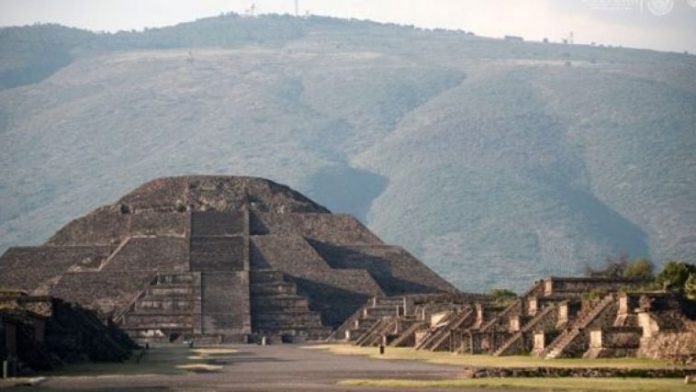Archaeologists in Mexico discovered a chamber and a mysterious tunnel beneath the Pyramid of the Moon in the ancient city of Teotihuacán, located near Mexico City, reports said Monday.
Researchers from the Instituto Nacional de Antropología e Historia (National Institute of Anthropology and History, INAH) and the Institute of Geophysics at the National Autonomous University of Mexico (UNAM) were the ones who located the unti-then hidden areas at the famous site.
The chamber, which has a diameter of 49 cm (19.3 inches), might be a ritual space used for funerals, experts on the subject said. In the statement, which was first published Oct. 24, they said the hidden chamber and the tunnel could be linked to the ancient culture’s concept of the underworld.
“These large offering complexes are the sacred core of the city of Teotihuacán. Hence what can be found inside can help unravel the relationships that this ancient metropolis had with other regions of Mesoamerica,” Dr. Verónica Ortega, director of the Integral Conservation Project of the Plaza de la Lun, said.
Between 1998 and 2004, archeologists have found the remains of more than 200 animals in tunnels underneath the pyramid. Since human remains were also found in other tunnels excavated at the Pyramid of the Moon, experts speculated similar remains may also be inside the newly discovered tunnel, which runs to the southern part of Teotihuacán’s Plaza of the Moon.
“In the explorations carried out at the pyramid in the 1980s, archaeologists Rubén Cabrera and Saburo Sugiyama found skeletons of individuals with skull deformations… and diverse greenstone objects (necklaces, human figures made with mosaics), so it is not difficult to think that something similar could be found in the subsoil,” Ortega said.
“The tunnel is located to the south of the Plaza de la Luna, but it is likely that there is another entrance to the east side, so it is essential to have a complete radiography to know where its entrance is,” he added.
The Pyramid of the Moon, or Meztli Itzácual, established around 150 BCE by a Mesoamerican culture, is the second largest pyramid in the area. It is only rivaled by the Palace of the Sun, IFL Science reported. Human sacrifices used to be performed to honor the gods at the Aztec city of Tenochtitlan (modern day Mexico City) where the pyramid lies, a report in Fox News. The excavated area was once the epicenter of the old city.
The statement by INAH said the new findings were first discovered in 2017 using electrical resistance technology. The Pyramid of the Moon has been a subject of interest since the 17th century, the statement said. It was first explored by the archaeologist Jorge Acosta in 1954.
Ortega has been carrying out the Integral Conservation Project of the Plaza de la Luna since 2015, the statement said, adding it began with a survey work of the surface and subsoil of the plaza where large graves were found.








